In our consulting experience at a training seminar for BHP Billiton managers in Sydney, Australia in 2023, we asked them to list the characteristics of an innovation culture. We found that many managers of this Australian multinational company listed characteristics such as intellectual courage, risk‐taking, and a flexible and non‐hierarchical structure. We felt that this was a great start to an innovative culture, but we also added the following tenets to move the company toward more innovation and creativity. More commitment by all employees to think outside the box, providing more support from lower levels, empowering people on the front lines, flatter structures, and using steering committees to lead change. These are tenets that we have learned from Tesla's approach to innovation culture. We found that a lack of proper understanding of the leader’s responsibilities is one of the reasons why the development and maintenance of a set culture of innovation fails. The development and maintenance of a culture of innovation is one of the main responsibilities of leaders. A simplistic view of culture and innovation as only a list of pleasant and attractive practices is negligent of leaders. Thus, too much bureaucracy and mechanistic cultures are not warranted today. ultimately the death of innovation. In this article, we will look at Tesla as one example of a powerful innovative culture. We will focus on Tesla as an example, not only because it is the best at an innovative culture but because it is truly dynamic in this area of business and cultural cohesiveness. Finally, based on our findings from Tesla, an applicable model for innovation culture and recommendations for executives will be presented.





